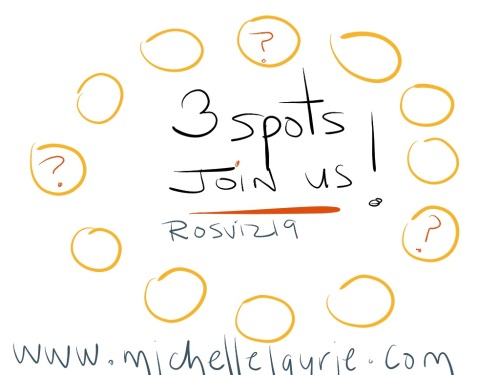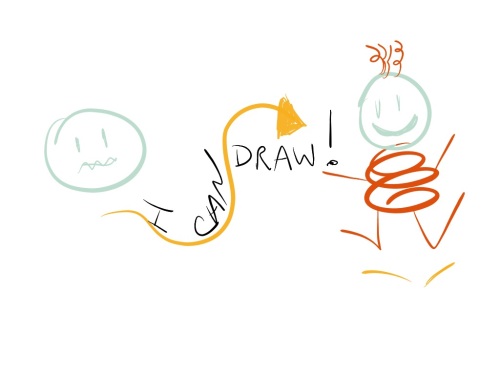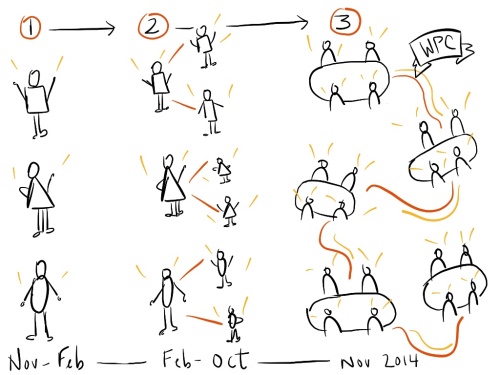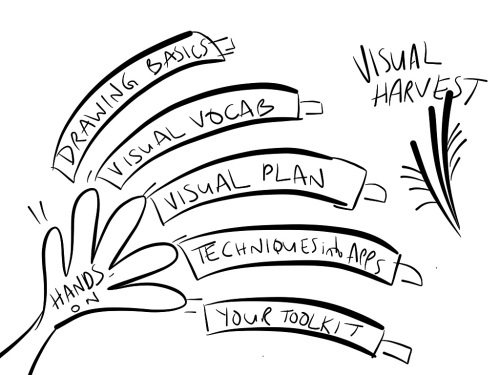I have recently joined an interesting project to establish a South Asia Urban Knowledge Hub (funded by the Asian Development Bank). I will have the opportunity to work with research institutes in Nepal, India, Bangladesh and Sri Lanka (to start) on sustainable development issues in the urban sector. My role as knowledge management specialist is to build capacity of the researchers to undertake outcome focused research for policy influencing. I am tasked with creating a template to help the researchers develop policy influencing strategies, improve technical writing skills for policy briefs, provide a 2-day training workshop and will also act as a mentor on an ongoing basis for two years. For anyone who knows me, this sounds like a dream!
In some ways, it is a dream and in other ways, I have gone down a rabbit hole of jargon that is giving me nightmares.
 As I consider the assessment I need to undertake as a first step, I cannot imagine asking people about their familiarity or confidence level in using tools like: problem trees, objective tress, force field analysis, stakeholder maps, SWOT, theory of change, the RAPID framework, alignment/interest/influence matrix, outcome mapping, advocacy strategy, communications strategy, etc etc etc. Don’t you feel overwhelmed just reading the list of available and suggested tools? I do.
As I consider the assessment I need to undertake as a first step, I cannot imagine asking people about their familiarity or confidence level in using tools like: problem trees, objective tress, force field analysis, stakeholder maps, SWOT, theory of change, the RAPID framework, alignment/interest/influence matrix, outcome mapping, advocacy strategy, communications strategy, etc etc etc. Don’t you feel overwhelmed just reading the list of available and suggested tools? I do.
This is forcing me to really take a step back and figure out what I need to know from the participants beforehand in order to design a good training and what is the best way to get the information from them (this is before I even start doing the real work!).
While originally I thought a simple online survey would work, I have decided that this is not the best tool given many people may not use the same terms for undertaking analytical tasks. My simple assessment could get wordy and complicated. Moreover, if I leave the online survey open-ended, I won’t have the opportunity to really understand the responses provided without proper follow-up. This leads me to the idea of conducting group interviews with each centre. This way, I can probe into the questions I ask with the group from each centre and build on the conversation as it evolves. I believe I will gain a better understanding of the types of methods they have used (or not used) previously.
I have already had one introductory Skype meeting with each centre so this is also a nice way to build our relationship given I am going to be working with them for the next two years.
Sooooo…given I want to learn about what experience (or lack of experience) the centres have with undertaking outcome oriented research for policy influencing these are the questions I’m considering using to guide my interviews. The results need to inform the design of a template for policy influencing as well as a 2-day training for the centres. I would love your feedback as its still in draft form. Or maybe you work in this area and have other bits of advice for me? If so, thanks for sharing!
1. Please share an example or two of research you undertook in the past specifically with the purpose of changing policy:
- How was the research topic decided?
- Did the research lead to a change? If yes, what were the key factors?
- Did you document your assumptions for creating change? If yes, how?
- Were other actors/partners involved? How so?
- Did you have a strategy in place that you followed?
- Did you use specific tools or techniques to understand the different actors/stakeholders involved? Those who would support or challenge your research?
- How did you monitor the change that took place?
- How do you know your influence on the change, as opposed to other outside forces?
- If not, have you used a strategy for other advocacy work? If yes, please describe what this looked like.
- If not, how do you feel embarking on this type of work in the future? What are you most excited about and most concerned about?
2. Please describe how you typically disseminate the knowledge generated from research.
- What methods do you use? Example strategy?
- What has been most successful? What has been least successful?
- How do you define your audiences?
- Do you typically write different messages for different audiences?
- Do you work with communication professionals?
- What type of communications products do you think policy makers find most useful? For example:
- Policy briefs
- Opinion articles, News items
- Media, Community radio
- Working groups
- High profile events
- Public pressure
3. To what extent are policies in your field evidence-informed?
- What are some of the factors that determine whether, and to what extent, evidence informs or even influences policy decisions?
- Is demand a necessary condition for the uptake of research?
- Do you think well-conceived and compellingly packaged research findings stimulate the interest of policy makers?








